Overview
After completing the design and release of the Surface Hub Diagnostic application in 2015, I was asked to take the work further and design the diagnostic application that would be used for the rest of the Surface family of devices. This native application was intended for the Surface Studio, Surface Laptop, Surface Pro, and Surface Book.
Initially, the application was only intended for use in the Microsoft Stores and the Return and Refurbishment Centers to help deflect the return of devices that did not actually have a problem. After refining the requirements and working with the Project Manager, I was able to adjust the design to make it optimal for Online Help Centers, Call Center Customer Service, End-users as well as Self-Service Kiosks throughout Greater China.
The application has been localized for Spanish and Chinese. Future releases will be made available through inboxing.
User interviews and testing
Microsoft associates made it very clear during user interviews that being able to diagnose battery issues almost instantly would save valuable time. I was able to incorporate several data points that would clearly delineate if the battery was not performing optimally. The battery panel is available immediate after launching the application.
Testing results dashboard
The application was built with three modalities that could dynamically change the presentation of information, which tests were performed, and the format of results displayed. Pictured below are the different results screens an end-user would see versus a store associate.
Application blueprint
Because there were multiple modalities for the application, blueprints were created in Axure to help engineers keep track of behaviors on a macro scale. Below is the example of one modality. Each screen in the blueprint is linked dynamically to the page in the prototype if a engineer needed to drill down for greater detail.
Surface Diagnostic Toolkit for Business
Due to the success and popularity of the Surface Diagnostic Toolkit, a new fourth modality was requested for IT Administrators to use. This created a new user-group with deeper knowledge and higher expectations of control. Log file collectors, changing the application settings for deployment packages, and where and what updates can be run were just a few of the feature requests.
Take a look at the release video from Microsoft.
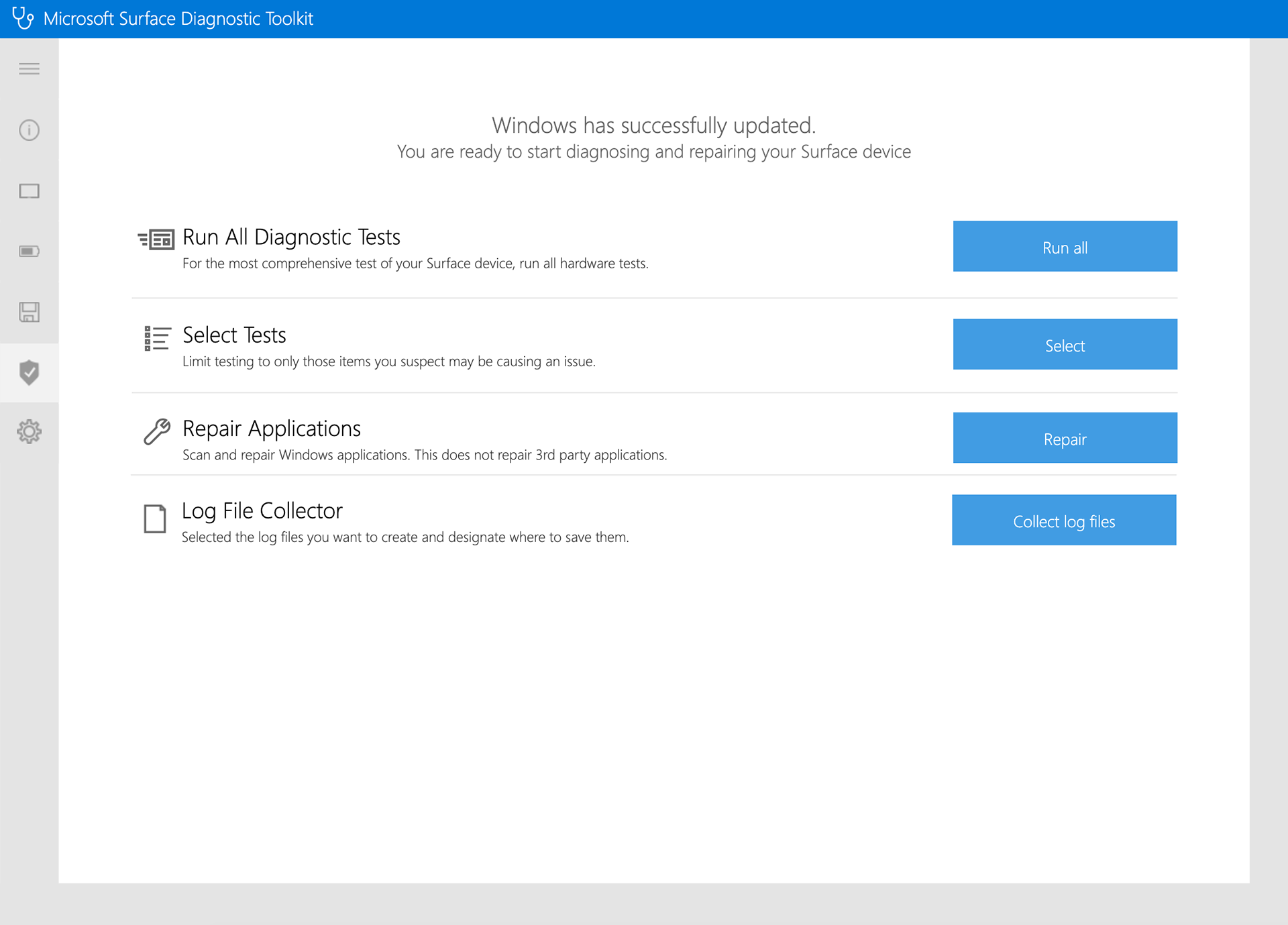
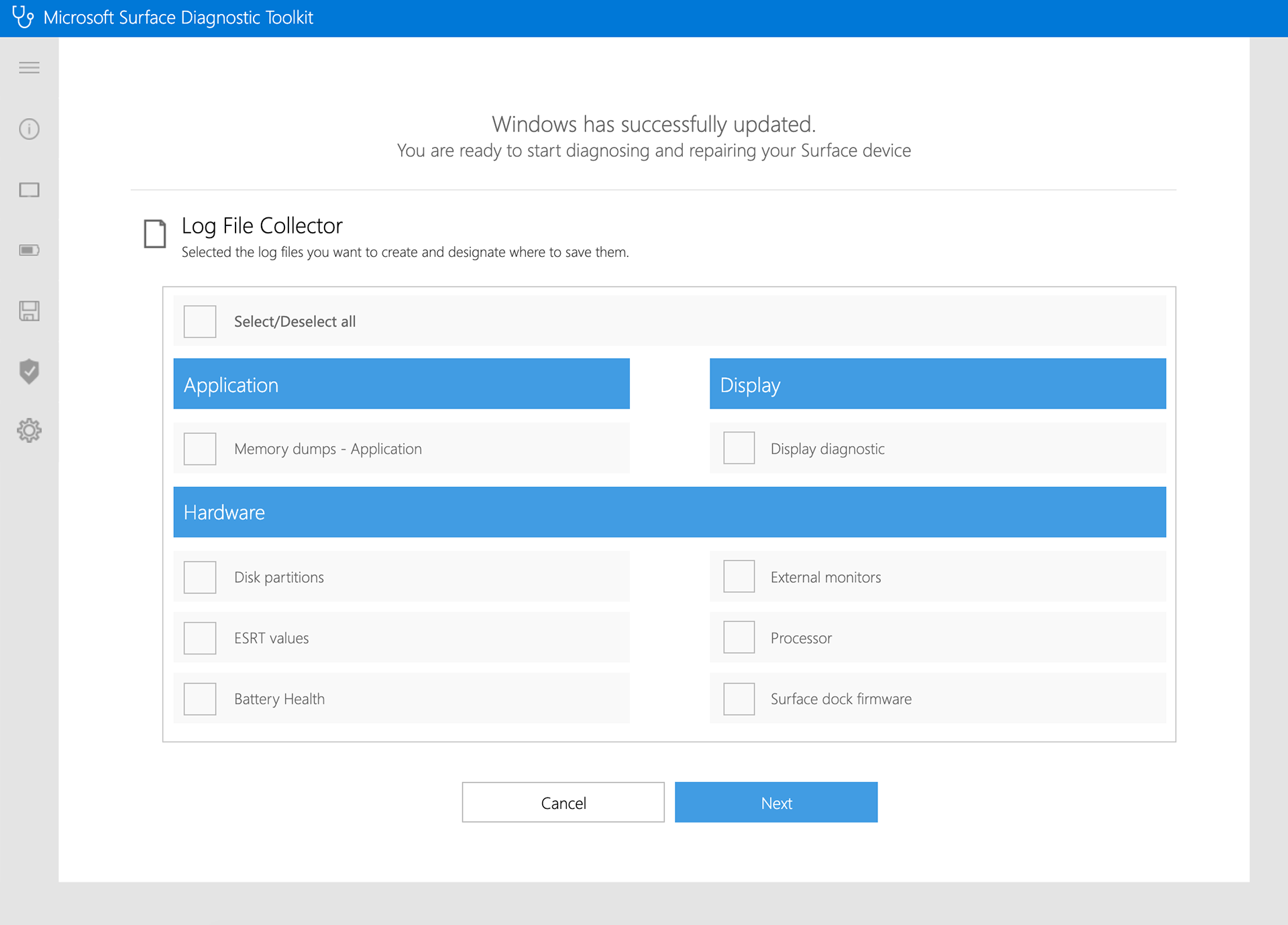
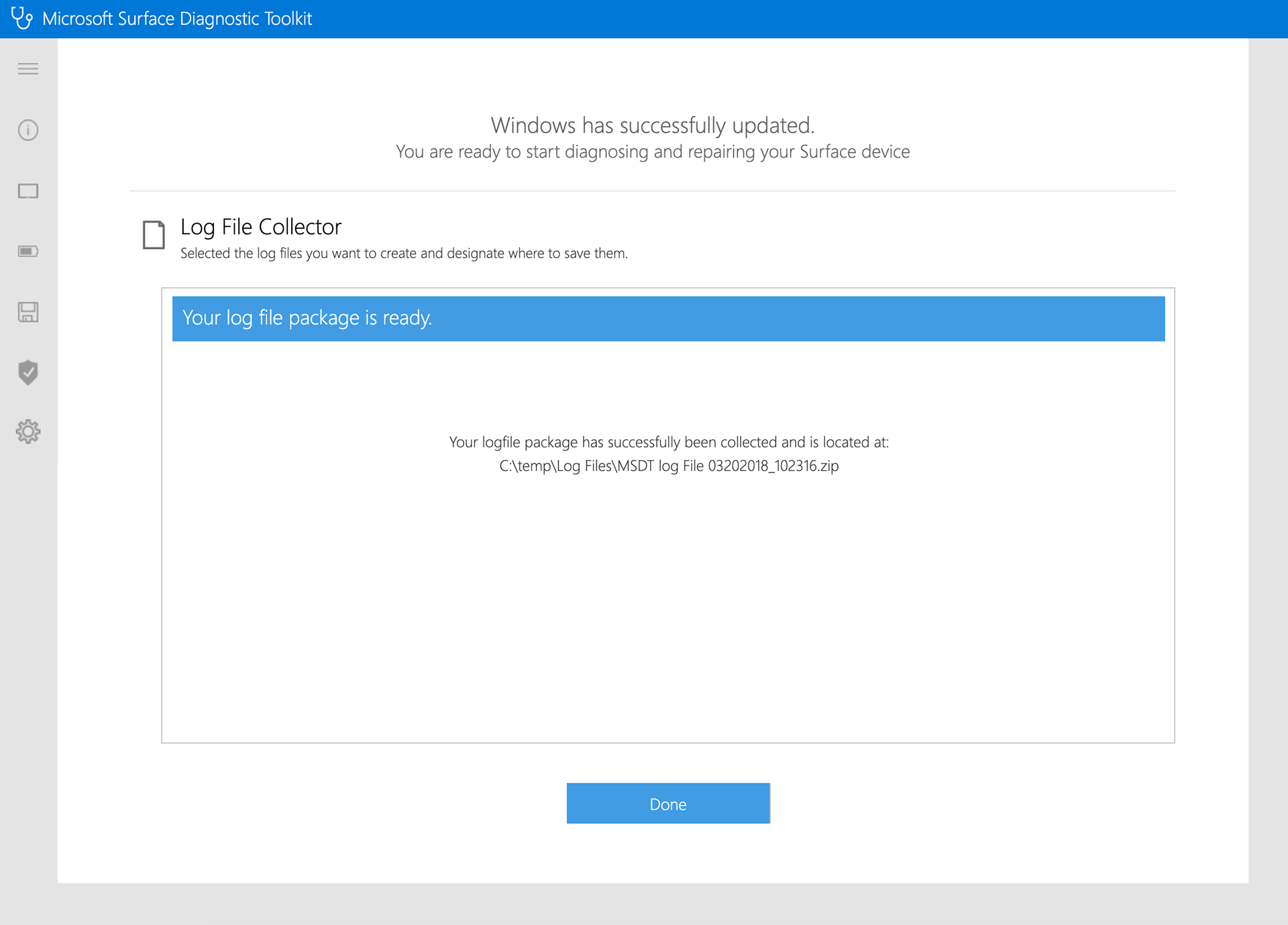
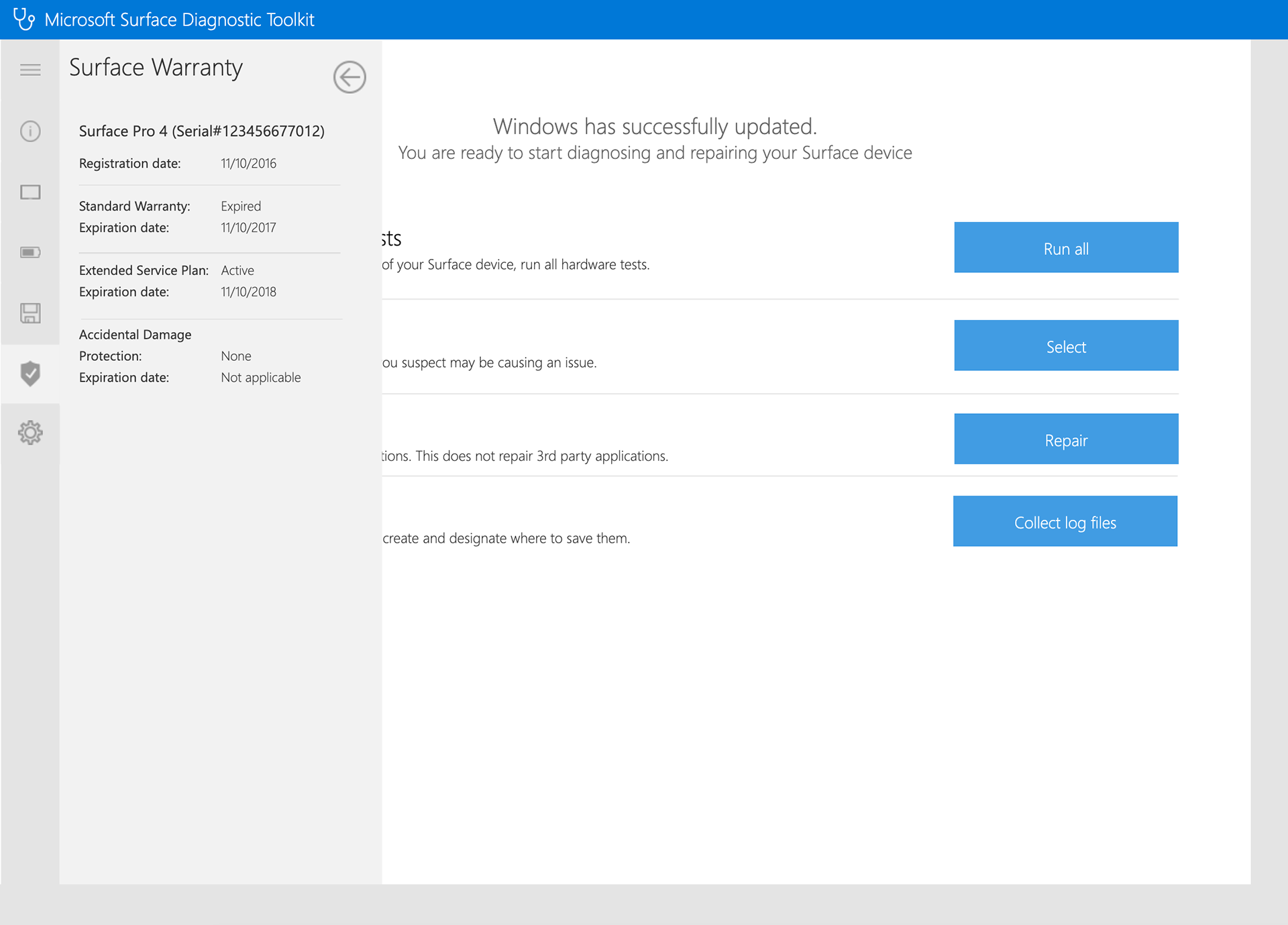

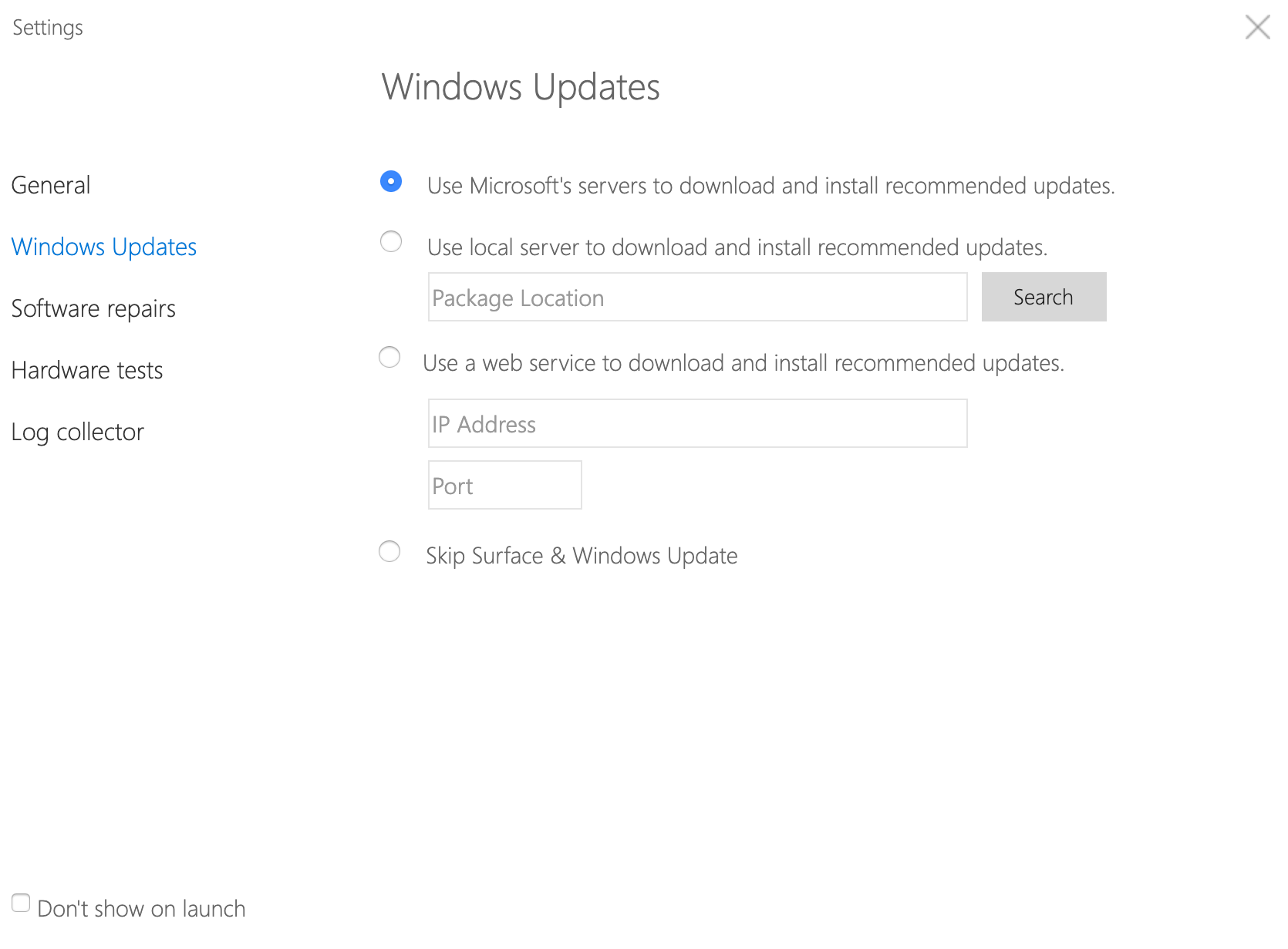
Axure prototyping
The project had tremendous complexity both because of the multiple modalities to the level of fidelity required by engineers to code different case scenarios. The prototype was so accurate it was also used by the Quality Assurance team to prepare for testing pre-release.

